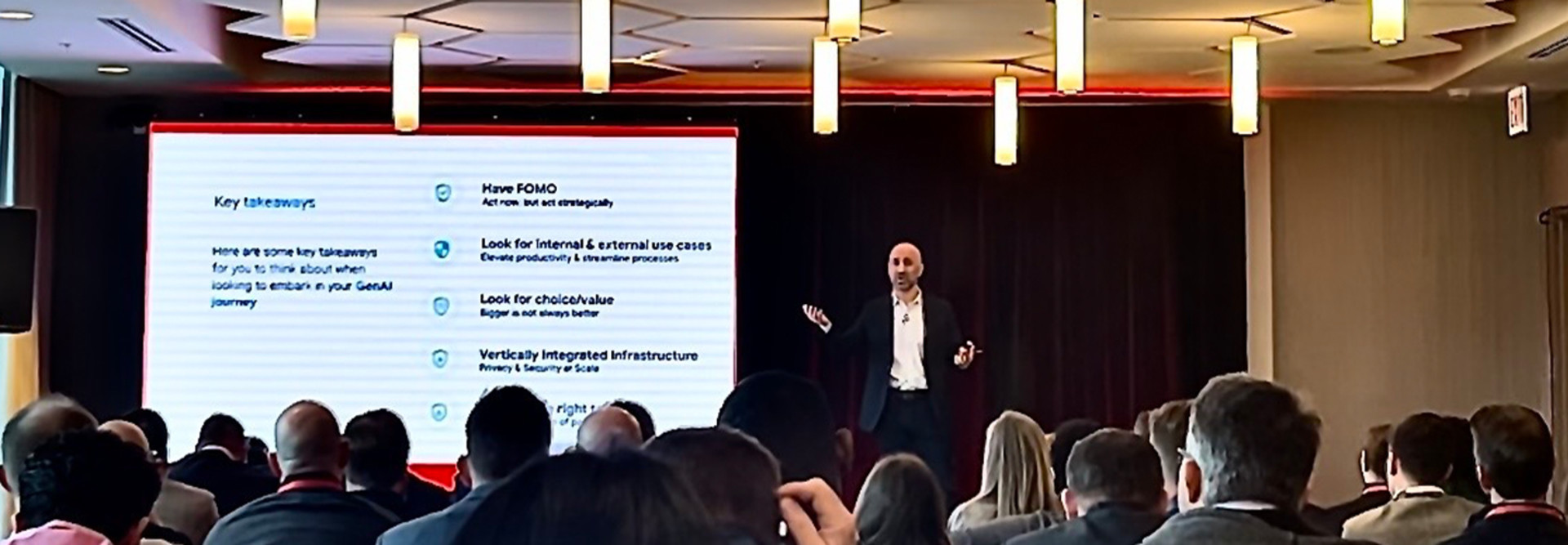But no matter what tech IT leaders select, “the most compelling digital experiences start with a compelling understanding of the customer — who they are, what they want,” notes a recent article in Harvard Business Review. “Unfortunately, many organizations have it backwards: They start with the technology and then back into customer understanding.”
However, the better method, said experts at the SummIT, is to identify a pain point — whether it’s a productivity gap with employees or lack of customer engagement — and evaluate how AI, ML, IoT, augmented reality and virtual reality tools can elicit a desired response.
Here are a few ways that businesses can empower their workforces and offer improved digital experiences.
Consider a Cohesive Cloud Service Platform
With dozens of devices and tools to manage, unifying them into one cohesive, cloud-delivered service can help. When it comes to networking and security, said Mike Kraus, Senior Systems Engineering Director at Cisco, a solution such as secure access service edge can streamline an organization’s operations and provide secure, seamless connectivity to all users, no matter their location.
This is the kind of tech investment that can boost operational efficiency and improve remote and hybrid work options.
READ MORE: Experts share how to navigate the data-driven world of AI.
Unified Communications as a Service, Cloud Communications as a Service, zero-trust network access and mobile device management are other unified, cloud-based solutions that allow IT leaders to gain visibility into their security and simplify their network infrastructure.
Reduce Latency and Improve Security
Users expect fast, responsive digital experiences. This is why optimizing images, evaluating caching and reducing latency is key. A secure experience with a brand also builds users’ trust.
Securing data with up-to-date encryption, running multifactor authentication methods and ensuring the continuous monitoring of systems is crucial to allow for iterative improvements over time.
WATCH: CDW experts share how to boost customer care and experience.
Empower IT Teams with Automation
It’s also important to empower teams as new tech is folded into the business. This may mean upskilling employees through training and data literacy programs, said Paul Zajdel, vice president of data and analytics at CDW.
IT leaders can also create a clear automation strategy so that IT staff is freed up to do more strategic, mission-critical work while AI performs more routine tasks. For example, “anything that has to be reported on can be automated,” said David Wedel, industries field director at CDW.
Tools such as Microsoft 365 Copilot can also support any level of the organization with features that “streamline tasks, automate workflows and enhance collaboration, unlocking productivity and creativity throughout your day,” notes Microsoft. Scott Rendell, partner technical architect at Microsoft, said that a good way to deploy AI is via a large language model trained on an organization’s specific data.
Foster a Culture of Innovation and Collaboration
Another recommendation from experts at the SummIT was to adopt agile methodologies and DevOps practices. This approach can help IT departments become more responsive to the changing needs of the business and its users.
If a business selects customer service chatbots and predictive analytics as two areas to pilot AI tools, for example, they should look to refine those use cases over time. This means fostering a culture of continuous improvement, where feedback is used to iterate on digital experiences.
UP NEXT: How a modernized digital experience fuels hybrid work.
Getting teams to collaborate across departments can also help. This can assist in optimizing costs, as one piece of tech can solve several problems at once. Change management is also a critical piece of the puzzle, as it helps teams unlearn old habits. “Your organization is a direct reflection of your leadership spine,” said Susan Hardy, lead transformation and change management Officer at CDW. “As leaders, we have a responsibility to cultivate and not punish people when mistakes are made and encourage them to ‘fail fast.’”
By focusing on these areas, IT leaders can create digital experiences that pave the way for future revenue, innovation and customer satisfaction.
Find BizTech’s full coverage of the event here, follow our live news coverage of the CDW Executive SummIT on X (formerly Twitter) at @BizTechMagazine and join the conversation using hashtag #CDWExecutiveSummIT.















